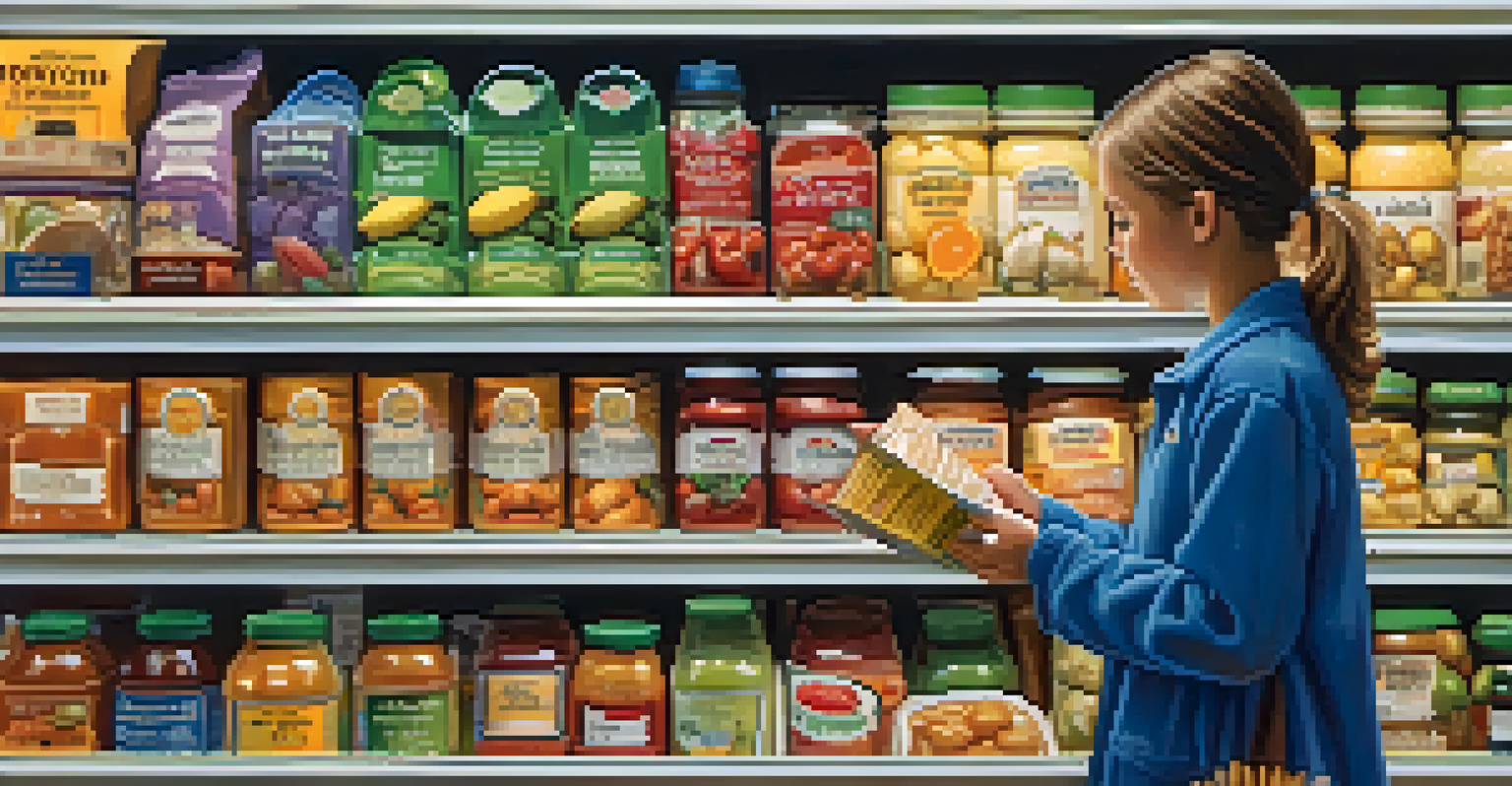Promoting Healthy Eating Habits Through Culinary Education

Understanding the Role of Culinary Education in Nutrition
Culinary education plays a crucial role in shaping our understanding of nutrition. By teaching the fundamentals of cooking and food preparation, it empowers individuals to make healthier choices. Imagine learning not just how to cook, but also why certain ingredients are beneficial for our bodies—that's the magic of culinary education.
You are what you eat, so don’t be fast, cheap, easy, or fake.
This education bridges the gap between knowledge and practice, helping people to incorporate nutritious foods into their diets. For instance, a student might learn to prepare a delicious quinoa salad, discovering its high protein content and health benefits. Such hands-on experiences make healthy eating not just a concept, but a tangible reality.
Ultimately, culinary education helps demystify healthy eating, breaking down complex nutritional information into practical skills. This not only fosters better eating habits but also instills confidence in individuals as they navigate their food choices.
Creating a Fun and Engaging Learning Environment
Learning about healthy eating doesn’t have to be boring. Culinary education often incorporates interactive methods, such as cooking classes and workshops, making the experience enjoyable. Picture a group of friends laughing as they chop vegetables and share cooking tips—that’s the essence of fun learning.

This engaging environment encourages participants to ask questions and explore new ideas about food. For example, a cooking class might challenge students to create a dish using seasonal vegetables, sparking creativity and a love for fresh produce. Such activities not only educate but also inspire a lifelong appreciation for healthy eating.
Culinary Education Empowers Choices
It equips individuals with cooking skills and nutritional knowledge to make healthier food decisions.
Moreover, the social aspect of culinary education fosters community connections. People often bond over shared meals and cooking experiences, creating a supportive network that emphasizes the importance of healthy eating together.
Hands-On Cooking: Learning by Doing
One of the most effective ways to promote healthy eating is through hands-on cooking experiences. When individuals actively participate in preparing their meals, they gain a better understanding of ingredients and techniques. Think of it as a cooking adventure where each recipe teaches something new about nutrition.
Cooking is like love. It should be entered into with abandon or not at all.
In these settings, learners can experiment with different flavors and textures while discovering healthier alternatives. For instance, they might substitute traditional pasta with zucchini noodles, realizing they can enjoy their favorite dishes in a lighter way. This experiential learning reinforces the idea that healthy eating can be delicious and satisfying.
Additionally, hands-on cooking cultivates essential life skills, such as meal planning and food safety. These skills not only contribute to healthier eating habits but also empower individuals to take control of their food choices.
Incorporating Local and Seasonal Ingredients
Culinary education often emphasizes the importance of using local and seasonal ingredients. This practice not only supports local farmers but also promotes healthier eating. When you eat seasonally, you're likely consuming fresher produce, which retains more nutrients.
Imagine walking through a farmer's market, selecting vibrant fruits and vegetables that are in season. Culinary education encourages this connection to food sources, helping individuals appreciate the flavors and benefits of fresh ingredients. For example, a class might focus on how to prepare a hearty fall stew using squash and root vegetables harvested locally.
Hands-On Learning Enhances Skills
Experiential cooking fosters creativity and confidence, making healthy eating enjoyable and achievable.
Moreover, using local ingredients can be more sustainable, reducing the carbon footprint associated with transporting food. This holistic approach to eating aligns with a growing awareness of environmental issues, making healthy eating choices not just a personal benefit but a community effort.
Understanding Food Labels and Nutrition Facts
Navigating food labels can be daunting, but culinary education helps demystify them. Understanding nutrition facts is essential for making informed choices about what we eat. A well-designed course will teach participants how to read and interpret these labels, empowering them to choose healthier options.
For instance, knowing the difference between added sugars and natural sugars can help individuals make better decisions when shopping. A culinary class might include exercises in comparing products, showing how to spot healthier alternatives in a grocery store. This practical knowledge is invaluable in today’s food market.
Additionally, understanding food labels can lead to healthier cooking habits at home. When individuals are aware of what's in their food, they can tailor their meals to fit their nutritional goals, making healthy eating a more manageable task.
The Connection Between Cooking Skills and Healthy Eating
Research shows a strong link between cooking skills and healthy eating habits. When individuals possess basic cooking skills, they are more likely to prepare meals at home, which often leads to healthier choices. Think about it: cooking at home allows you to control the ingredients and portion sizes.
Culinary education focuses on teaching essential cooking techniques that build confidence in the kitchen. Participants learn everything from chopping vegetables to roasting meats, gaining the skills necessary to recreate healthy recipes. This empowerment transforms cooking from a chore into an enjoyable activity.
Local Ingredients Promote Health
Using seasonal and local produce not only supports sustainability but also enhances the nutritional value of meals.
As people become more comfortable in the kitchen, they may find themselves experimenting with healthier recipes and ingredients. This newfound creativity not only enhances their meals but also reinforces the idea that healthy eating can be fun and fulfilling.
Building a Lifelong Appreciation for Healthy Eating
Culinary education lays the groundwork for a lifelong appreciation for healthy eating. When individuals learn about food in a hands-on, engaging manner, they develop a positive relationship with it. This connection can lead to sustained healthy choices throughout their lives.
By fostering curiosity about different cuisines and cooking methods, culinary education encourages individuals to explore new flavors and ingredients. Imagine someone who once shied away from vegetables now experimenting with exotic salads and vibrant dishes. This transformation highlights the impact of culinary education on eating habits.

Ultimately, the skills and knowledge gained from culinary education can create a ripple effect, influencing family and friends. As individuals pass on their newfound appreciation for healthy eating, they contribute to a culture of wellness within their communities.